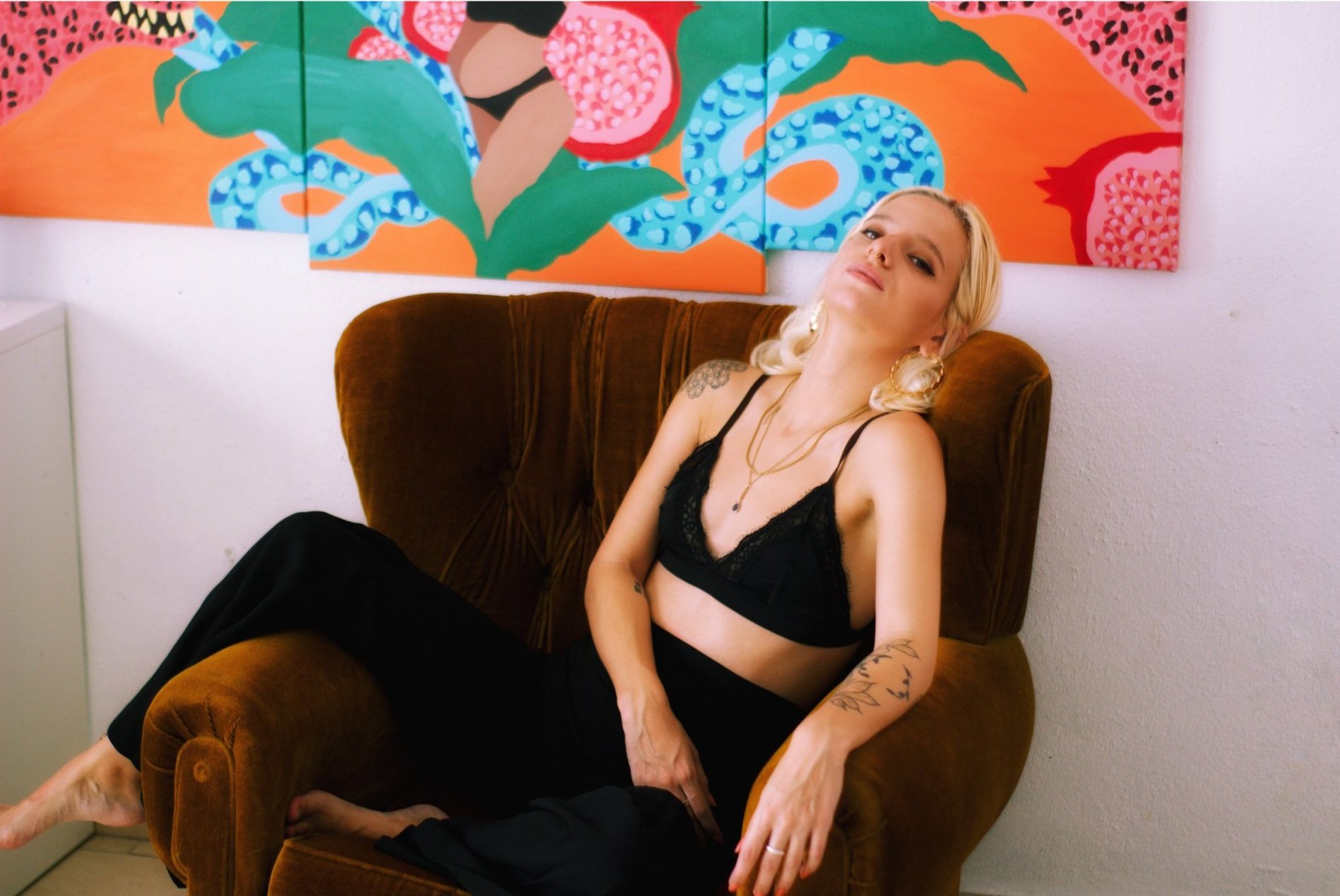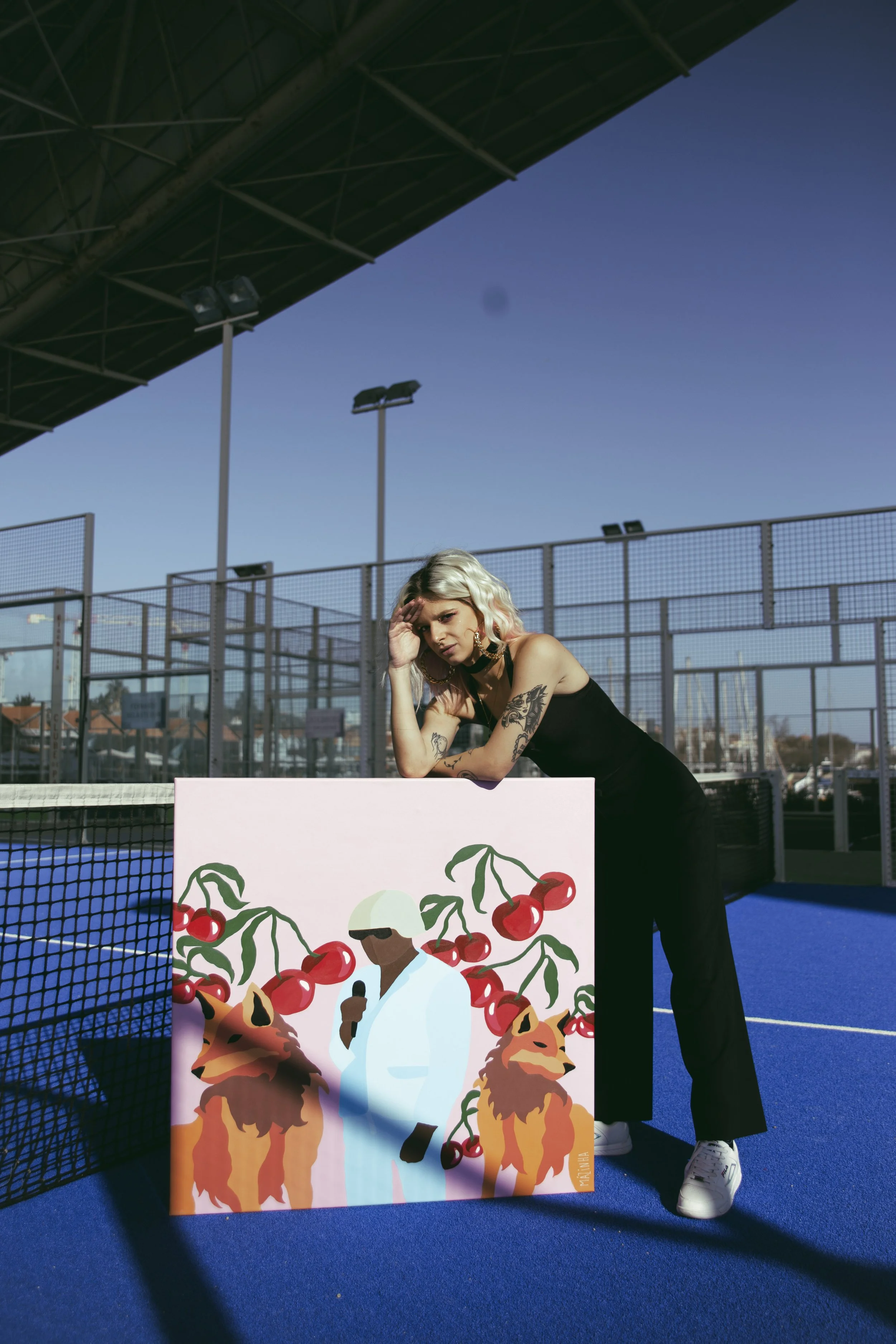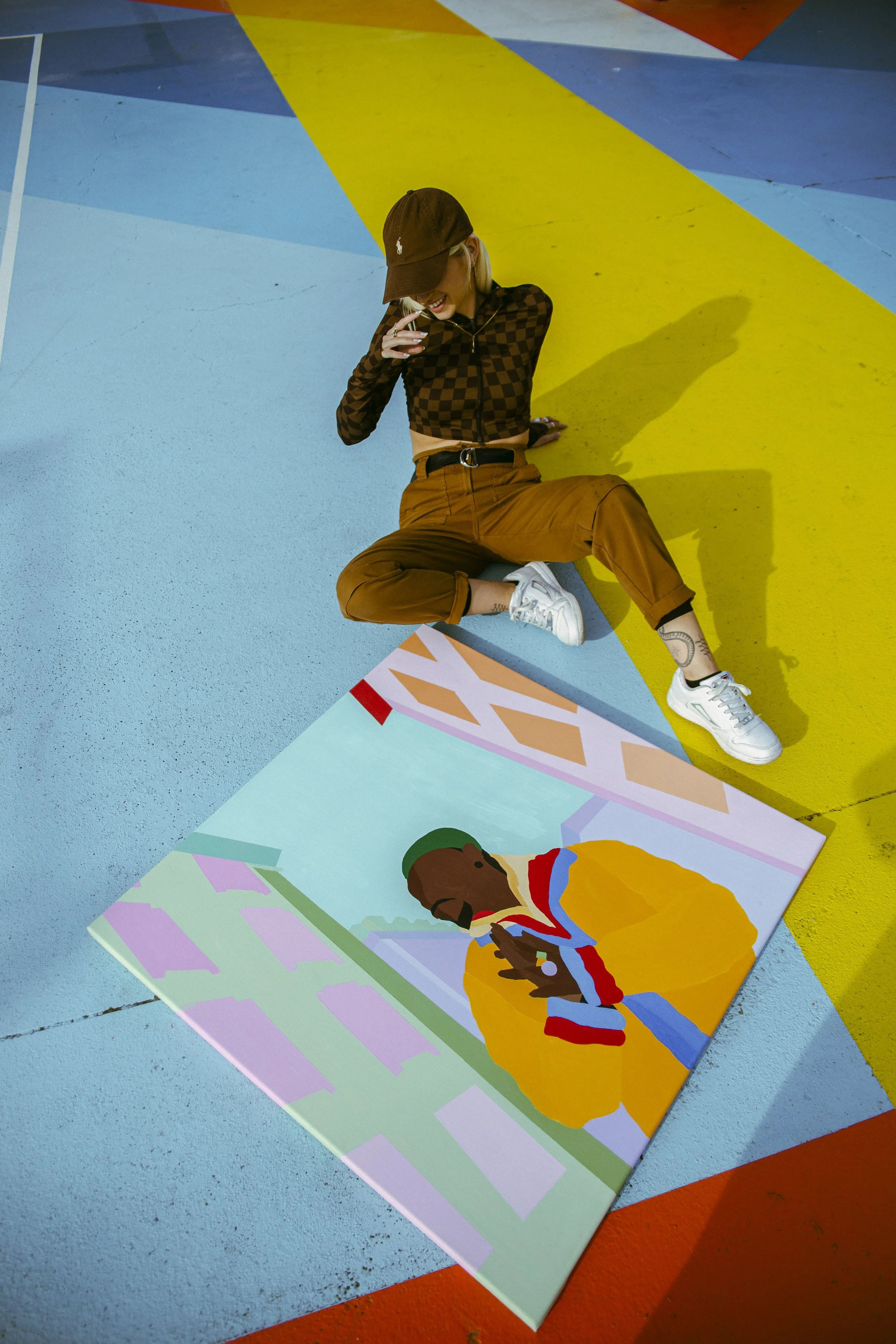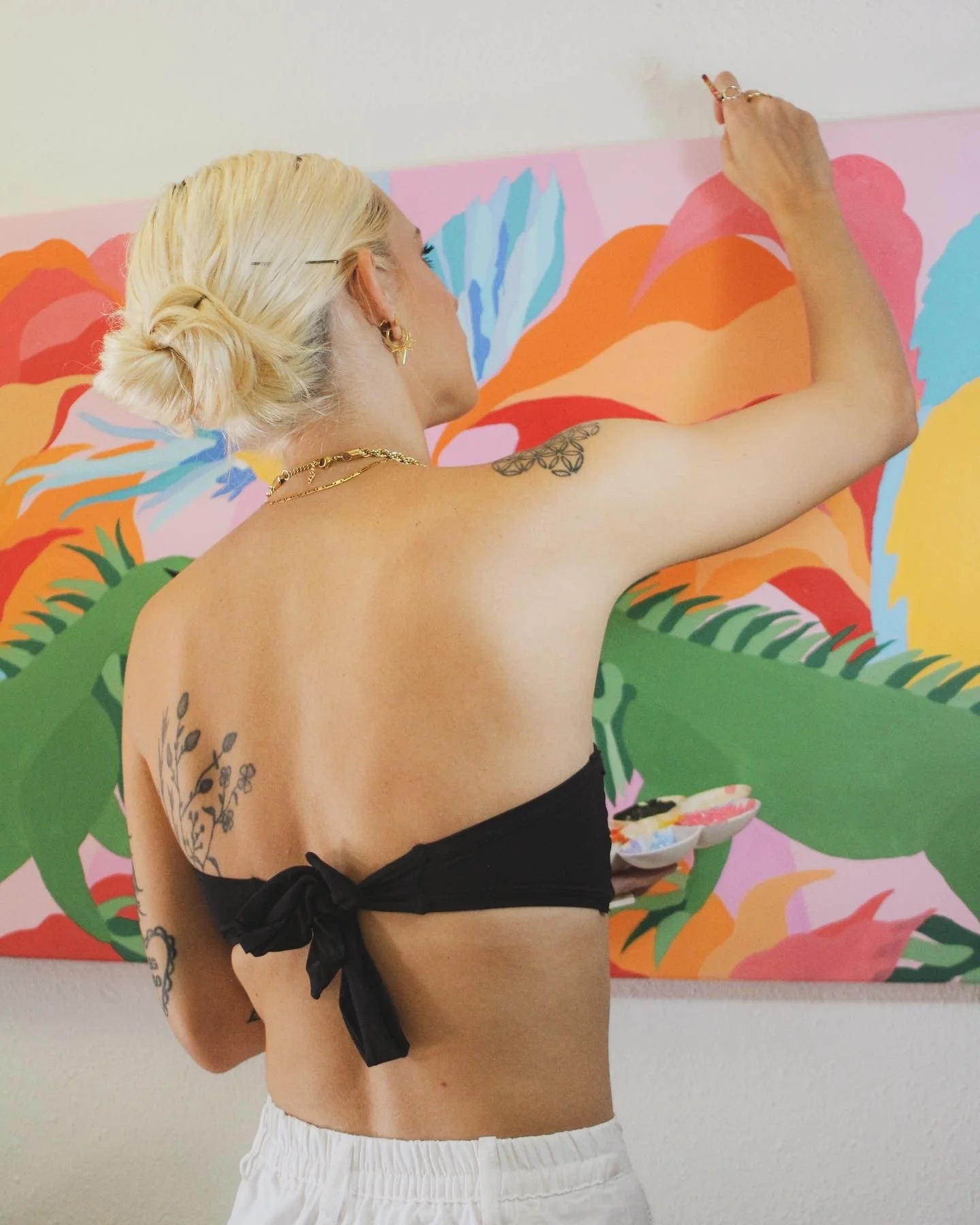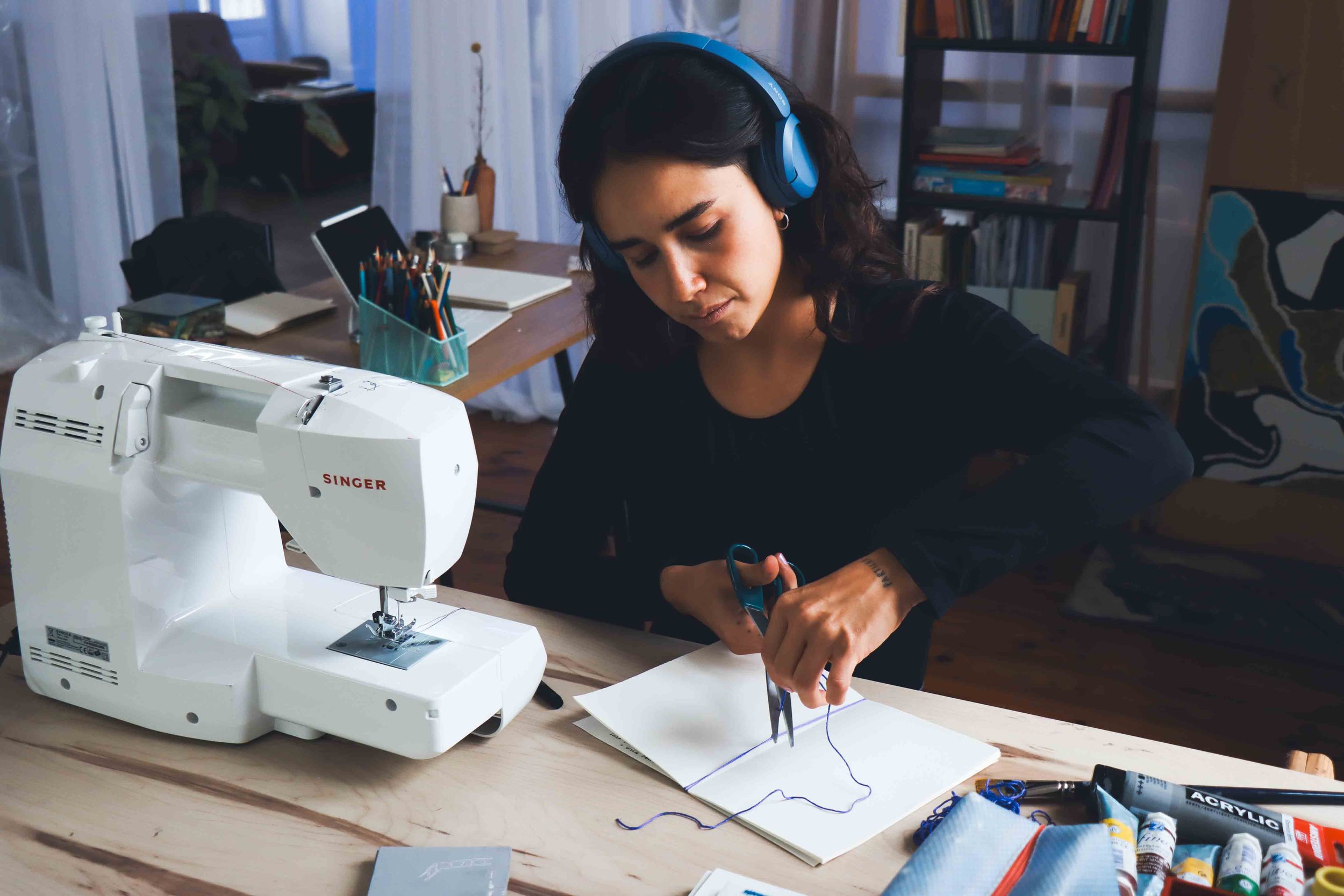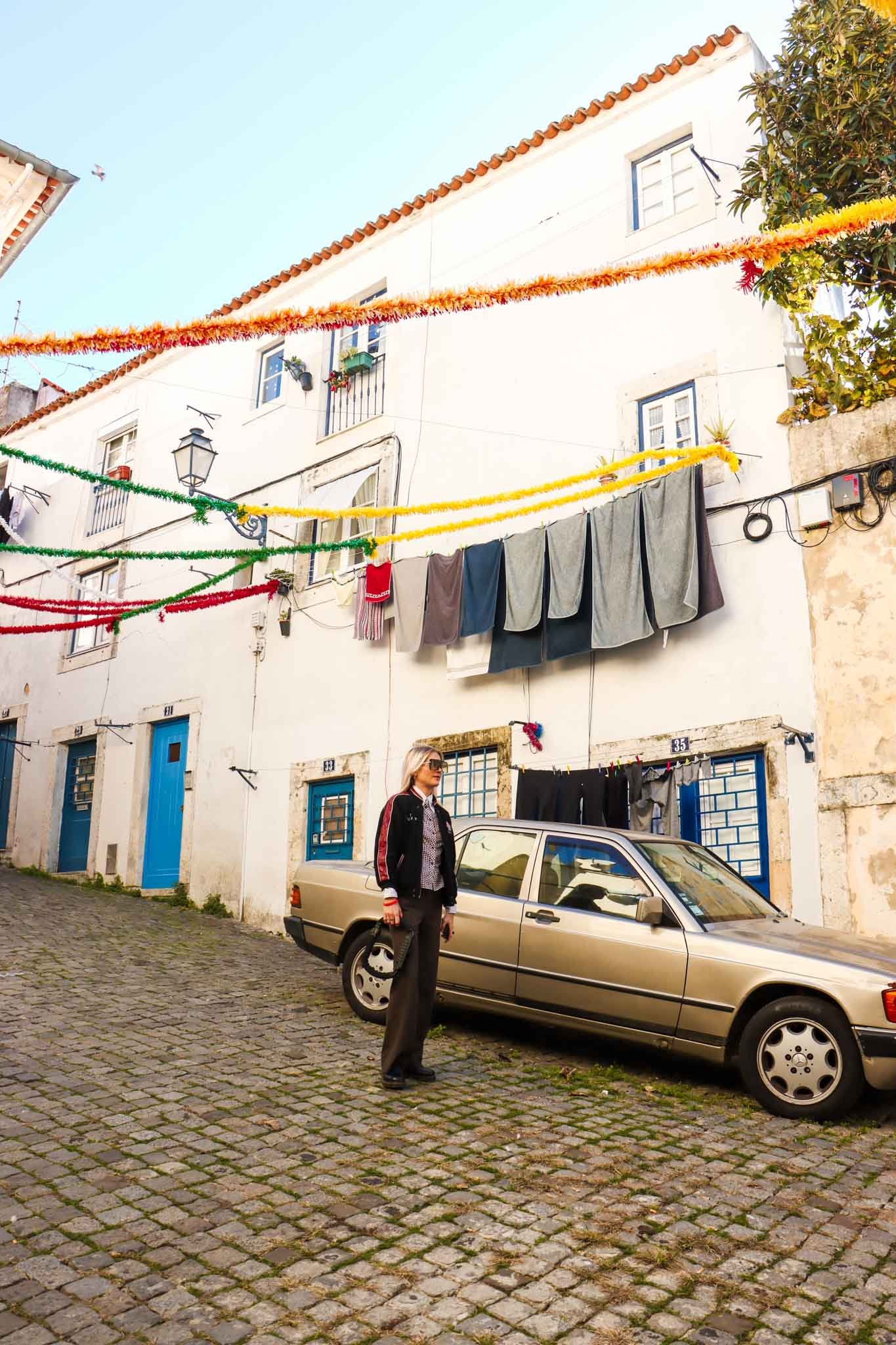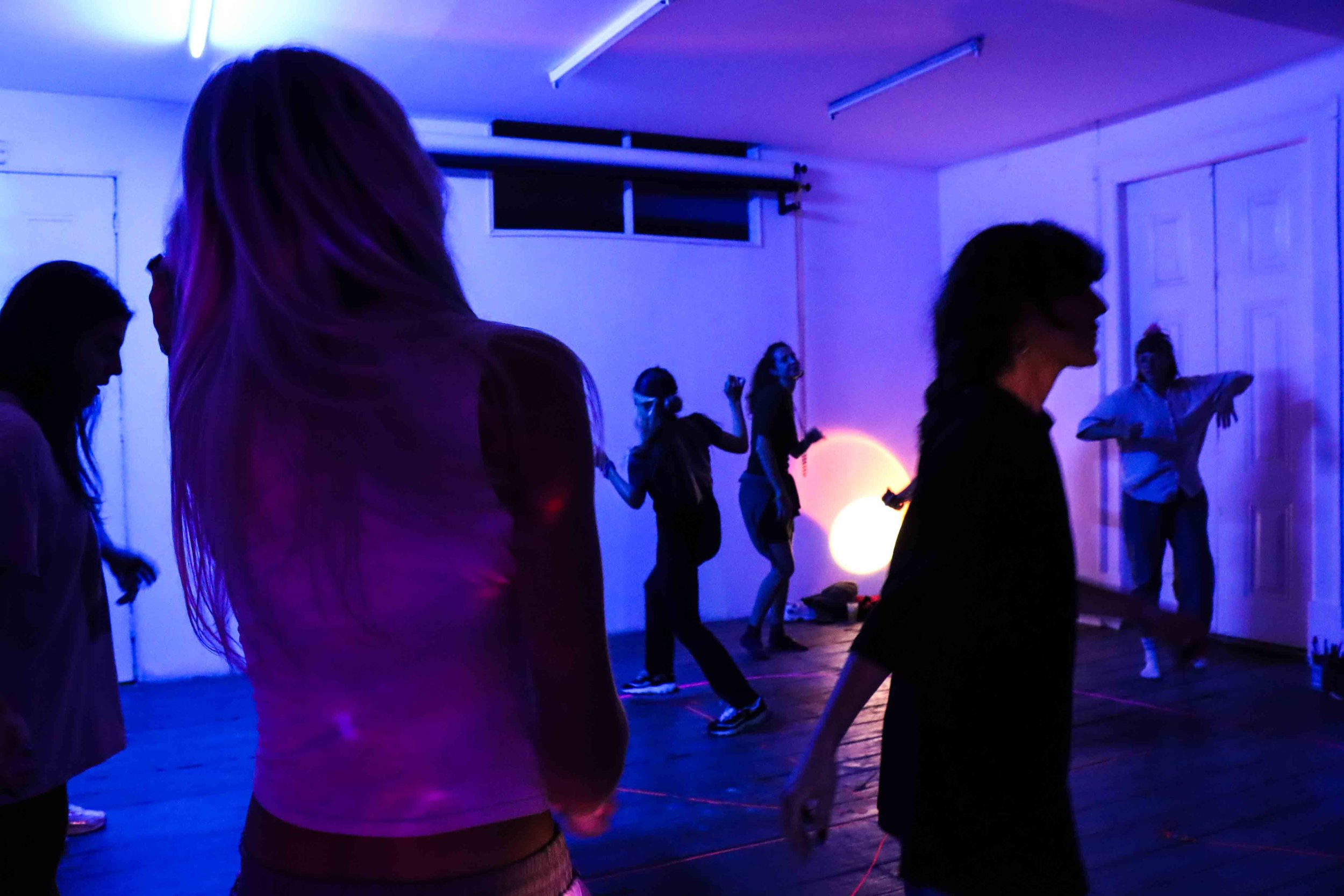IN THE STUDIO WITH ARTIST MÁZINHA
Photo by Mechanical Devil
Introducing Mázinha, an artist and musician from Lisbon. Initially starting out in theatre, Mázinha later turned to painting and music as her primary modes of creative expression. A sense of exaggerated mood and vibrant playfulness are central to her paintings, and her bold use of colour blocking, geometric shapes, and urban and cultural depictions give her work a distinct pop-art-adjacent feel. Her paintings and live painting performances have gained her prominence on the Portuguese art scene.
Fusions between music and visual arts have defined her career thus far. Through live paintings and collaborative performances alongside musicians, she probes at the process and act of creative expression, raising money for significant causes in the process.
When did you start painting?
I always painted as a kid, but I started painting when I was around 15 – abstract paintings usually. I used to paint at home, in gardens, alone, listening to music. It was not always my main thing, but I've always loved to paint as a hobby. Then in 2020, since everybody was at home during Covid, I had a lot of time; my artwork had a transformation from those abstract paintings to what you see now. Now, everything is a straight image and thought out – nothing is by accident.
Why do you think your work changed in that way?
A lot of things happened at that moment in my personal life. It was kind of a need to organise, and so, I started organising everything.
And then your art got more organised too?
Yes. I was searching for that in my work. I started to use more references, taking pictures of people or myself and then working from those pictures.
Photo by Luana Noví
How do you pick your subjects?
It's what’s in my mind. Sometimes it's a friend of mine, or sometimes it's an artist that I like. I paint a lot of cultural figures – like with this new Fight Club collection. Fight Club is my favourite movie, so I decided to try out a new language in these paintings. I needed something new because everything was starting to feel the same.
I don't have much structure in my ideas. I really let my mind speak. I can paint whatever, just like a kid – I really let my inner child command me. I paint what feels cool to me.
But what I really study is colour theory, and how colour connects with people. I like a lot of colour; even when I painted abstract, the colours were similar to how they are now. I think it's another way to communicate, you know, to try to send a message. Colour is always the main thing that I think about, and not so much the image. The image and the design are more about what I think will create a balanced composition, and the colour is what the painting will offer you. The colour of an image will tell you something.
I had an exhibition recently that included two works where the person was exactly the same in each, but the background used different colours. The name of the piece was ‘Your Environment Will Influence Your Perspective’. I really believe that.
Photo by Mechanical Devil
Photo by Mechanical Devil
You mentioned being drawn to what’s ‘cool’. How do you define cool?
I really don't know what’s cool, I think it's very subjective. Something that is cool for me, is not cool for other people. I really think as artists, people push you to do the things that they like, but I think our job is to present things that people have not always thought about. You should always try new things and make mistakes. Someone might not think it's cool, but someone else will connect with it.
And do you have any influences?
I have two artists who I've always loved. One of them was even one of my school projects when I was about 12 – Takashi Murakami. He's a big influence, I've always loved his art. And then David LaChapelle; he’s a photographer of artists and I love his colour palettes.
You say in your bio that you mix imagination and reality. Can you explain what you mean by that? What do you like about that combination?
So, for example, my painting ‘The Walkman’ – the subject of the painting is a very good friend of mine, and we have a very special platonic connection. I asked him to take a picture of himself, in a formal shirt and tie, holding a plant. And then, I decided to paint lobsters around him because of the Yargos Lanthimos movie, The Lobster. It’s about the kind of love society puts on us, when in reality, love has so many spectrums. So that painting is really a mix of reality and imagination.
Photo by Luana Noví
And I feel like you're playful in your work, and that manifests in adding these imaginative elements.
I like to play with art, because I think I started out in art like that. I started studying theatre at 13 in a very cool theatre school, Escola de Teatro Raul Solnado, where I was taught by Joselita Alvarenga and Renato Solnado. It was a very free place — I learnt that art could be a free place to be yourself without fear.
But then, as you grow up, society pressures you to prove yourself all the time. I'm always like, ‘No, let me keep playing.’ I write music and I like to be playful in my songs too, even with my feelings. Playing is one of the good things about art – I like to enjoy art as something that is completely without rules.
Everyone should play more. Why did you decide to stop theatre and pursue painting?
I didn’t like what theatre had to offer me anymore. I decided to start tattooing; then in 2017, I bought my first instrument, a pandeiro – a Brazilian instrument that I learned how to play with one of my closest friends; then I wanted to learn how to sing, so I formed a group and we started playing in different places.
So you just try out different things?
I always give myself the opportunity to fail. I think that it's the most important thing, because when you're not afraid of failure, of being bad at something, you have so much space to experiment. I think people nowadays forget to have hobbies.
Photo by Mechanical Devil
Photo by Ingrid Lyra Matheus
Or they forget to have fun with things. Everyone wants to make it in a way that often destroys themselves in the process, where the original thing isn’t even enjoyable anymore.
Instead of ‘I need to paint’, it’s, ‘I need to be a painter’.
Exactly.
It’s missing that part of enjoying the process, because when they’re doing the thing for the first time, they’re already recording it to show someone. They’re already thinking about the end result.
Some people tell me, ‘Oh, I wish I wrote; I would really like to be good at writing,’ and I'm always telling people, ‘Write. You don’t have to show it to anyone.’ We’re always thinking, ‘This has to be good’.
We just have to do things and try things.
It's difficult, because society pushes us to think we have to be the best, that everything has to be perfect, but we learn from our mistakes. The only way to learn how to do something is by being bad.
Photo by Luana Noví
So now I'm going to ask you about your room at Echo Studios. How did you make it your own?
I think my paintings already speak for themselves, so when I joined, I painted the walls all white, and put up the paintings. I always want my studios to look like my home; I really like that environment.
I felt the connection with this room the minute that I entered – with you guys and with the space. I was so happy. I had been looking for a studio for one year already, so it was magical for me to finish the year 2024 with the start ahead. This year has been amazing for my work so far.
It's been so cool to be around such good artists who inspire. And my nephews love it here – I have a lot of kids glued to me. So for me, it was very important to have a space that I can bring all the kids, my mother, my family to.
So it's a bit of a family studio as well? That's very sweet.
Yes, exactly. I think all of Echo Studios is a very friendly, family environment.
And what’s coming up for you?
I'm going to start working on a big piece that I had to take off the wall because it was almost the size of the whole wall, and I'm exploring new techniques. I'm also starting to record my songs and create music videos which is very special for me.

